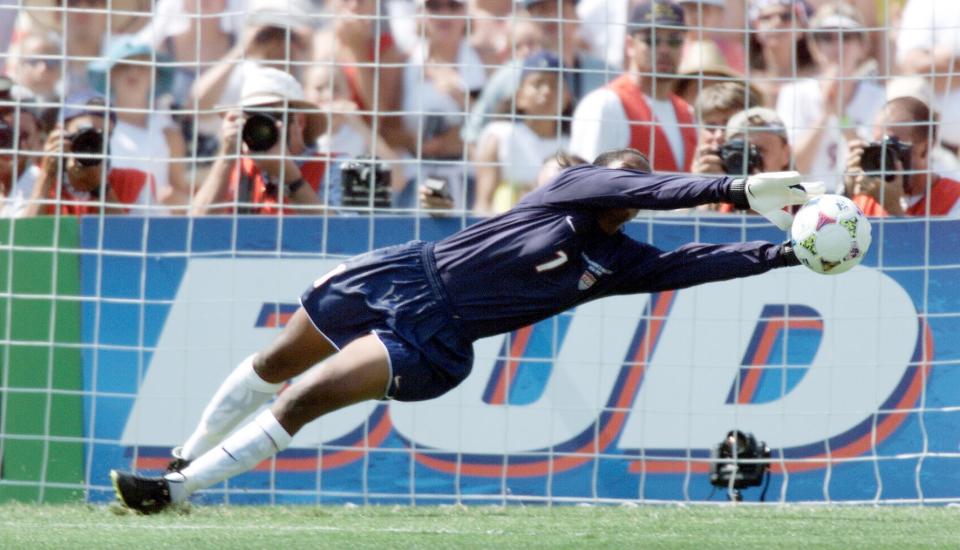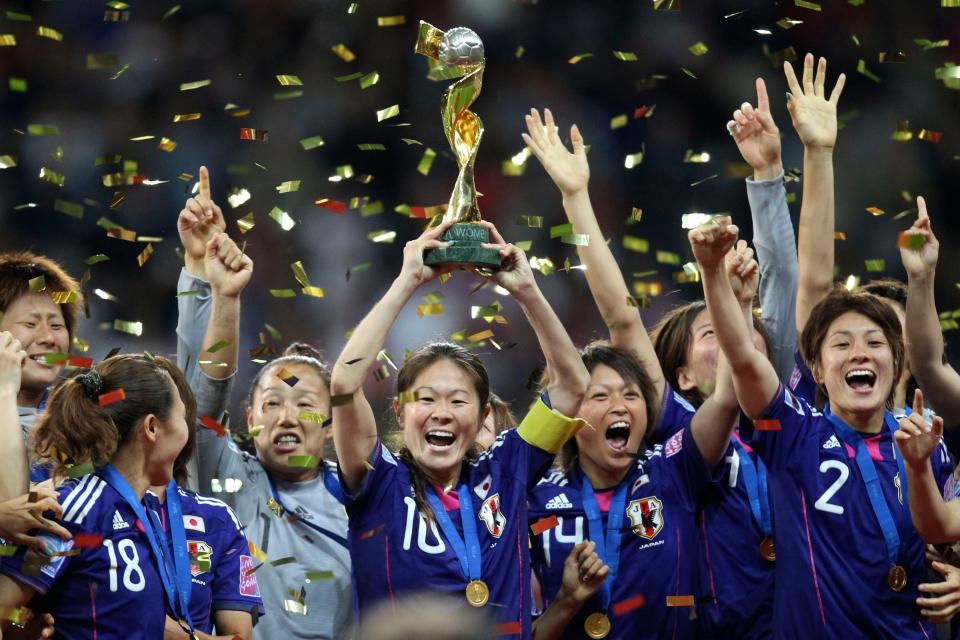When the World Cup kicks off this month in Australia and New Zealand, it will mark a number of firsts. It’s the first tournament with 32 teams, up from 24 four years ago, and attendance for the 64 games will almost certainly set a record.
It’s also the first women’s tournament to be played in the southern hemisphere, and the first time it’s being co-hosted by two countries. Either the USWNT becomes the first team, men’s or women’s, to win three World Cups in a row, or another country becomes the first besides the United States to win the title since 2011.
Here’s a look at the history of the World Cup:
USWNT wins the inaugural World Cup, beating Norway 2-1 for the title. … Known then as the FIFA Women’s World Championship, the tournament featured 12 teams from all six continental confederations. Europe had the most teams, with five. … Games lasted 80 minutes instead of the traditional 90. … Attendance was 510,000 over 26 games. … USWNT’s Carin Jennings won the Golden Ball while Michelle Akers won the Golden Boot with 10 goals.
Norway beat Germany 2-0 to win the title. USWNT finished third after losing to Norway in the semifinals. … Featured 12 teams, with Europe again having the most (five) teams. … FIFA experimented by allowing each team a two-minute timeout during each half. … Attendance was 112,213 over 26 games. … Norway’s Hege Riise won the Golden Ball while Norway’s Ann Kristin Aarones won the Golden Boot with six goals.
1999, United States
USWNT won its second title, beating China on penalty kicks (5-4) in what would be a seminal moment for women’s sports. The final at the Rose Bowl drew more than 90,000 people, the most ever for a women’s sporting event, and 18 million Americans watched it on TV, a record for a soccer game, men’s or women’s. … The tournament was expanded for the first time, to 16 teams. … Most of the games were played in NFL stadiums, and attendance for the 32 matches was 1.2 million, a record that would stand until 2015. … China’s Sun Wen won the Golden Ball as the best player, and she and Brazil’s Sissa shared the Golden Boot with seven goals each.

Meet the team: Get to know the 2023 World Cup roster
2003, United States
Germany beat Sweden 2-1 in overtime, becoming the first country to win both the men’s and women’s World Cup. USWNT finished third after losing to Germany in the semifinals. … Tournament was originally supposed to be in China but was moved because of the SARS epidemic. … Despite being played from Sept. 20 to Oct. 12, putting it up against the NFL and college football, drew almost 680,000 fans. … The 16-team field included France, Argentina and South Korea. … Germany’s Birgit Prinze won both the Golden Ball and Golden Boot after scoring seven goals and notching five assists.
2007, China
Germany beat Brazil 2-0 to become the first repeat champion. USWNT finished third after losing to Brazil in the semifinals. … After the 2003 tournament had to be moved because of the SARS epidemic, FIFA said China would host in 2007. … Attendance for the 16-team tournament was almost 1.2 million. … Germany’s 11-0 victory over Argentina in the group-stage opener was the most lopsided in World Cup history until 2019. … Brazil’s Marta won both the Golden Ball and Golden Boot after scoring seven goals and recording five assists.
2011, Germany
Japan beat the USWNT on penalty kicks (3-1) to become the first Asian team to win a World Cup, men’s or women’s. … The 16-team field did not include China for the first time. … Attendance was 845,711. … Panini did its first sticker book for a women’s World Cup, but it was only available in Germany. … Five North Korean players failed doping tests, causing the team to be banned from the 2015 tournament. … Japan’s Homare Sawa won both the Golden Ball and Golden Boot, finishing with five goals and one assist.

Carli Lloyd had a hat trick in the first 16 minutes of the final, the third goal a dazzling strike from midfield, as the United States beat Japan 5-2 for its third World Cup title. … Tournament was expanded to 24 teams and rosters increased to 23 players, both matching the men’s World Cup. … All games were played on turf, prompting a gender equity lawsuit by players who were concerned about the injury risk and extreme heat associated with the artificial fields. The lawsuit was dropped five months before the tournament began, but FIFA eventually promised the World Cup would never be played on turf again. … Attendance was almost 1.4 million, a record that still stands. … The UWSNT’s Lloyd won Golden Ball honors as the best player while Germany’s Celia Sasic won the Golden Boot with six goals and an assist.
2019, France
Team USA beat the Netherlands 2-0 to win its second consecutive and fourth World Cup, tying them with the German men for second-most titles. USWNT’s fifth appearance in a World Cup Final was also a record. … Last tournament with 24 teams, with the 2023 World Cup expanding to 32 squads. … First women’s World Cup to use the video assistant referee (VAR) system. … Attendance was 1.1 million. … The final drew a record 82.18 million viewers worldwide, while several countries set records for viewership during the tournament. … The Americans’ Megan Rapinoe won Golden Ball and Golden Boot honors with six goals and three assists. Teammate Alex Morgan also finished with six goals and three assists, but Morgan won the Silver Boot because she had played more minutes. … Jill Ellis of the United States joined Italy’s Vittorio Pozzo (1934, 1938) as the only coaches to win multiple World Cup titles.
This article originally appeared on USA TODAY: How Women’s World Cup has changed since first tournament in 1991

